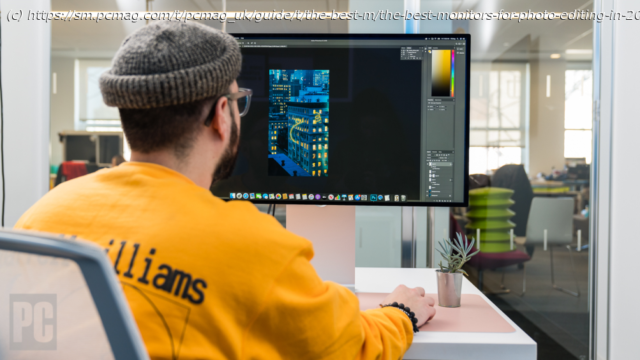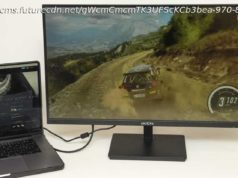Whether you’re a creative pro, an amateur enthusiast, or a student learning the trade, here’s how to shop for a display to use for photo work—plus the top picks from our lab-tested reviews.
Shopping for a panel for painstaking photo work? Photographers and other graphic and multimedia artists at all levels have their own priorities and wants in a monitor, and buying the right display for color-correct work will pay off many times over. PC Labs has decades of experience testing monitors, way back to the days of CRTs, and we subject today’s photo-centric displays to rigorous brightness, contrast, color-coverage, and accuracy testing. We also render a standard selection of photos and video images on each monitor for analysis. Our overall pick for best photo-editing monitor is the Dell UltraSharp 40 Curved Thunderbolt Hub Monitor (U4025QW), but no single monitor is best for all photo-editing scenarios and budgets. We’ve laid out our top tested picks below, as well as a buying guide to monitors for photo work and a big spec breakout of our favorite models.
Wide-gamut monitors, which let you select from a palette of more than a billion colors, are the cat’s meow when it comes to photography, although it is important that they adequately cover the particular color space(s) that you will be using. If you’re working with a 14-bit or 16-bit RAW file, you’ll want to get a display that can show you the subtleties contained within each image you capture.
Nowadays, a digital connection such as DisplayPort, USB-C (typically carrying a DisplayPort signal), or Thunderbolt is standard, but you will want to match up your panel with the output of your PC or Mac. For most uses, you can look for a display with an in-plane switching (IPS) panel and at least an 8-bit lookup table (LUT); it will be able to pull images from a palate of 16.7 million colors. (More about IPS and screen types in the next section.) Moving to a top-end panel with a 10-bit LUT expands that number to more than a billion—generally speaking. To achieve that number, though, you’ll need a high-end display designed for photographers, but be prepared to pay a premium.Screen Technology: IPS Rules, But OLED Is Coming On Strong
Most LCD panels geared toward photographers and graphic artists use IPS technology, though we are beginning to see more organic light-emitting diode (OLED) panels, which we discuss below. IPS has several advantages over other commonly used LCD hardware technologies such as twisted nematic (TN) and vertical alignment (VA). It offers wide viewing angles (up to 178 degrees for both vertical and horizontal); these are the maximum angular distance from looking in front of a screen to looking from the side (or above) without a change of brightness or shift in colors. IPS displays tend to have better viewing angles than VA panels, and much better ones than TN panels.
Also, IPS panels are known for having the most accurate colors of the three. IPS panels in monitors designed for creative professionals tend to have higher color depth (up to 10 bits; these are the panels that can choose from a palette of more than a billion colors) than most TN or VA displays, and support a wider color gamut, often covering all—or nearly all—of the DCI-P3 and Adobe RGB color spaces. VA panels may cover the sRGB space but not much more, and TN displays have even more limited color coverage.
While for the most part IPS panels rule the roost when it comes to photo editing, OLED monitors—which tend to be expensive but do well at displaying colors and have excellent contrast—are making inroads in the market, and in our list of recommended models.
OLED images look great—they achieve their superior contrast thanks to individual pixels that can turn wholly off, making the panels capable of true black and a theoretically infinite contrast ratio. OLED colors appear vivid and well saturated—a common complaint is that they look too good on the photo editor’s screen, compared with what the average user with a mere-mortal monitor is likely to see!
One issue with OLED screens is that they can suffer burn-in from prolonged use if displaying a fixed screen or if a set of immobile menus or toolbars is left shining endlessly on them. You don’t want to keep them turned on for days and weeks on end with static images or screen elements showing, unless the panel features an anti-burn-in technology (which might, for example, auto-shift pixels minimally to prevent burn-in).How to Assess Color Spaces and Color Coverage
A color space is a defined range of colors.






